The 1meg resistor is needed to safeguard the user from faults from other equipment connected to mains earth.
Keep in mind that the wrist strap is a permanent connection to the electric system of the building. If another piece of equipment experiences a fault, there could be a big fault current through the mains earth wiring system. That means that, in unfortunate circumstances, the mains earth terminal could reach a dangerous potential. In this case, the 1Meg resistor limits the current from the earth wire trough the user to a safe limit.
See this Wikipedia article about Earth Potential Rise, for example.
Excerpt:
The resistance of the Earth is non-zero, so current injected into the earth at the grounding electrode produces a potential rise with respect to a distant reference point. The resulting potential rise can cause hazardous voltage, many hundreds of meters away from the actual fault location.
Therefore the earth wiring system (and your wrist), due to its low resistance, is roughly at the same potential of the point where the fault current enters ground, whereas your feet (several hundred meters away from that point) are at a lower potential. Without that 1Meg resistor: ZAPP!!!
EDIT (to address downvoting and clarify my answer)
Since my answer has attracted a couple of down-votes and some criticism in the comments (not necessarily related, at least not apparently) I feel compelled to clarify something, but I'd like also to remind downvoters what down votes are for: for answers that are not useful, not on topic or plainly wrong.
First: I was told that regulation doesn't require the 1Meg resistor for the reasons I stated. My answer: I never stated that my explanation was related to some regulation (I didn't even know there was a specific regulation for wrist bands - BTW, I'd like to see some reference), but I concede I could have been more explicit.
Second: As I wrote in a comment, I admit that my scenario is less likely than, for example, touching a live wire or an ESD event whose rapid discharge could cause issues. Nevertheless, as someone said in a comment, You only die once! Faults in electric systems do happen, and often they are not under your control, so no level of care from your side could prevent them, you can only (try to) prevent the consequences. Hence the scenario I depicted is, IMO, well worth considering (so it is on-topic and it is useful). Moreover, the question in the title is Should there really be 1 MΩ resistance between an anti-static wrist strap and a pc?, not something like Why regulations impose a resistor there? or What's the most likely scenario that resistor is put there for?.
To further make my point you can see this article on Wikipedia about Stray Voltages. Not everything is directly related to what I'm saying, but the part on Neutral return currents through the ground is. Excerpt (emphasis mine):
Stray voltage became a problem for the dairy industry some time after electric milking machines were introduced, and large numbers of animals were simultaneously in contact with metal objects grounded to the electric distribution system and the earth. Numerous studies document the causes,[11] physiological effects,[12] and prevention,[13][14] of stray voltage in the farm environment. Today, stray voltage on farms is regulated by state governments and controlled by the design of equipotential planes in areas where livestock eat, drink or give milk. Commercially available neutral isolators also prevent elevated potentials on the utility system neutral from raising the voltage of farm neutral or ground wires.
(I didn't have the time to search for an article involving grounded humans instead of grounded cows, but you get the point.)
Bottom line: connecting a human body to any low-impedance path that could possibly rise in potential is dangerous and life threatening, so proper safety measures should be in place.
